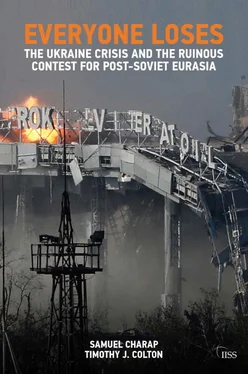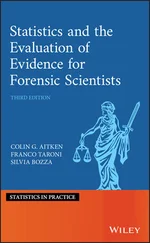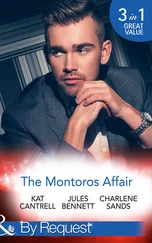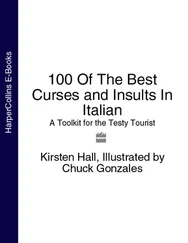Russia had dug in its heels in Moldova following the collapse of the Kozak Memorandum and Russian-inspired settlement efforts in 2003. But the West, and particularly the US, seemed intent on using the linkage between A/CFE ratification and the Istanbul Commitments to drive Russia’s army out of the region and force settlements to the protracted conflicts. In Moldova, Russia’s military presence was twofold: remnants of the 14th Army guarding weapons stockpiles, and the Russian component of the peacekeeping force (PKF), created via the ceasefire deal that terminated the fighting in Transnistria in 1992. Within NATO, no ally questioned that the Istanbul Commitments governed the former, but the latter was the subject of dispute. The US insisted there was a link and proposed to replace the PKF with a multinational EU–Russia force. [27] Some details may be found in ‘A/S Fried-Poldir Araud on Iran, Kosovo, Georgia, Moldova/CFE, NATO Ministerial’, 31 January 2007, released by WikiLeaks as Cable 07PARIS363_a, https://search.wikileaks.org/plusd/cables/07PARIS363_a.html ; ‘CFE: Germany Pushes for Being Forward-Leaning on A/CFE Ratification at Upcoming Extraordinary Conference’, 4 June 2007, released by WikiLeaks as Cable 07BERLIN1107_a, https://search.wikileaks.org/plusd/cables/07BERLIN1107_a.html ; ‘November 7 HLTF and NRC-ACE Meetings at NATO’, 28 November 2006, released by WikiLeaks as Cable 06USNATO687_a, https://search.wikileaks.org/plusd/cables/06USNATO687_a.html .
Washington’s position on this issue seemed designed to compel Moscow to accept terms regarding the Transnistria conflict and its presence there by holding back on A/CFE ratification, which Moscow was eager to achieve. The gambit backfired.
In April 2007, Putin, in his annual address to parliament, declared a moratorium on Russia’s implementation of the original CFE agreement, evidently in order to force NATO to ratify A/CFE. He denounced Western ‘attempts to gain unilateral advantages’ by ‘making use of an invented pretext for not ratifying [A/CFE]’ while ‘build[ing] up their own system of military bases along our borders’. [28] ‘Poslanie Federal’nomu Sobraniyu Rossiiskoi Federatsii’, 26 April 2007, http://kremlin.ru/events/president/transcripts/24203 .
In December of that year, Russia suspended its implementation of CFE, while no NATO member state moved to ratify A/CFE. [29] It should be noted that the CFE treaty contains no suspension clause so the Russian move was of dubious legality.
This incident epitomised the ruinous character of the hardening regional contestation. Both Russia and the West adopted inflexible zero-sum stances regarding a dispute on regional security and were prepared to cling to them rather than negotiate a compromise solution. In the end, Russia’s attempt to force NATO member states to ratify A/CFE had failed, and the West had made no progress on the frozen conflicts. Everyone lost the transparency and accountability of the original CFE, and Moldova missed a chance to rid itself of an unwanted Russian military presence.
No more Yaltas
The demise of the conventional arms-control regime fed an upsurge in tensions between Russia and the West in 2007–08. Putin’s speech at the Munich security conference in February 2007, in which he pilloried various aspects of US foreign policy, set the tone. The tensions deepened in February 2008 when Kosovo declared its independence from Serbia and was recognised by the US and most of its European allies. Russia was bitterly opposed, and warned that diplomatic acknowledgement of Kosovo’s independence would have ramifications for the unrecognised entities in post-Soviet Eurasia. In the interim, another dispute had broken out regarding the prospect of a NATO Membership Action Plan (MAP) for Ukraine and Georgia.
Introduced in 1999, MAP was an obscure bureaucratic step for aspirants to NATO membership, setting down the conditions required to join. A MAP did not imply automatic membership of NATO, as the final decision on a candidate nation’s accession was to be a political one, requiring a unanimous vote among the allies. In the heat of the tensions of 2008, though, both Russian and Western officials treated MAP as tantamount to NATO membership and adopted equally inflexible positions. In February 2008, a Russian deputy foreign minister warned the US ambassador in Moscow that ‘Russia would not consider a MAP offer as a “technical” step. It would be a strategic challenge with serious strategic consequences…. [It] would affect not only Russia–Ukraine and Russia–Georgia relations but also Russia’s partnership with the US.’ [30] ‘DFM Karasin on Ukraine, Georgia, Transnistria, Armenia and Belarus’, 8 February 2008, released by WikiLeaks as Cable 08MOSCOW353_a, https://wikileaks.org/plusd/cables/08MOSCOW353_a.html .
Such statements fed the pro-MAP drive in Washington. As then-secretary of state Condoleezza Rice recalls, ‘For the West, given the pressures that Moscow had been placing on Georgia, Mikheil Saakashvili’s government had a good claim for the MAP as a counterweight to Russia.’ [31] Condoleezza Rice, No Higher Honor: A Memoir of My Years in Washington (New York: Broadway Paperbacks, 2012), p. 671.
MAP had become the primary gauge of the larger contestation in the region.
The denouement would come at the NATO summit in Bucharest, Romania, in April 2008. In the months leading up to that meeting, the MAP question had become highly contentious within NATO; allies were divided between opponents, led by Germany and France, and ardent supporters, including East Central European states and the US. For supporters, the issue had become a litmus test for willingness to take on Russia’s influence in Georgia, Ukraine and post-Soviet Eurasia more broadly. As Asmus writes, advocates of MAP were ‘not necessarily interested in the details of whether Georgia had or had not successfully completed all of its reforms’. Instead, ‘they believed it was necessary to embrace and reassure Georgia at this critical moment when so much seemed to hang in the balance, and to send a message to Moscow to back off.’ [32] Ronald D. Asmus, A Little War That Shook the World: Georgia, Russia, and the Future of the West (New York: Palgrave Macmillan, 2010), p. 117.
The Bush administration pressed the case for MAP publicly during the president’s visit to Ukraine, en route to Bucharest. At a joint press conference with Yushchenko, Bush said, ‘Your nation has made a bold decision [to request a MAP], and the United States strongly supports your request. In Bucharest this week, I will continue to make America’s position clear: We support MAP for Ukraine and Georgia.’ He added that he had recently said the same to Putin in a phone conversation, telling him, ‘you shouldn’t fear that, Mr President. I mean, after all, NATO is [an] organization that’s peaceful, or NATO is an organization that helps democracies flourish. Democracies are good things to have on your border.’ [33] ‘Bush and Yushchenko Remark on Ukraine and Nato’, Washington Post , 1 April 2008, http://www.washingtonpost.com/wp-dyn/content/article/2008/04/01/AR2008040101600.html .
Putin and his advisers did not view this development in similarly rosy geo-ideational terms.
It is rare that NATO summits involve substantive negotiations over important issues. Working-level officials in allied governments usually hash out all the agreements weeks beforehand, making the summits largely ceremonial occasions at which the leaders provide their blessing to the already-agreed texts. Bucharest was different; there was no consensus on MAP for Georgia and Ukraine. The debate at the foreign-minister level demonstrated changes to the intra-Alliance dynamic from a particular source – admission of the ten new members from East Central Europe in 1999 and 2004. When the German foreign minister voiced reservations about MAP, he was shouted down by his Polish colleague, who said that ‘[MAP] is a matter of national security for us. And now you come and tell us you are more worried for Moscow than for your allies.’ [34] Radek Sikorski, quoted in Rice, No Higher Honor , p. 674.
In the end, heads of state and government negotiated an ad hoc compromise: no MAP, but the summit communiqué declared that Ukraine and Georgia ‘will become’ members of NATO at some unspecified future point. [35] ‘Bucharest Summit Declaration’, 3 April 2008, http://www.nato.int/cps/en/natolive/official_texts_8443.htm .
Never before had NATO promised membership to aspirant states. The beleaguered leaders were making a necessary compromise to avoid a diplomatic meltdown. But once the parley was over it became clear that the decision was the worst of all worlds: while providing no increased security to Ukraine and Georgia, the Bucharest Declaration reinforced the view in Moscow that NATO was determined to incorporate them at any cost.
Читать дальше











